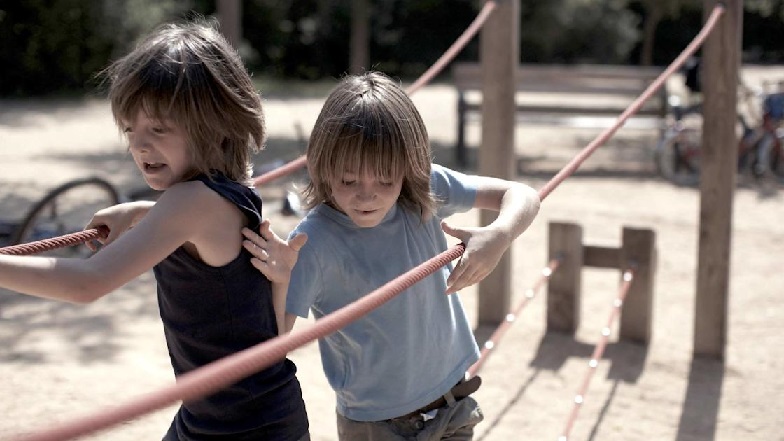Most parents have seen their kids argue over playground swings or turn small disagreements into loud standoffs. Usually, we chalk it up to “growing pains” and hope it passes. But when those same behaviors don’t fade—and instead grow sharper during the teenage years—the story changes. What once looked like harmless pushing and shoving can evolve into patterns of aggression that unsettle not only families, but schools and entire neighborhoods.
Aggression in teens isn’t just “acting out” when it reaches certain thresholds. According to the CDC, about 8% of children ages 3–17 have been diagnosed with a behavior disorder—10% of boys and 5% of girls. Each one of those percentages represents families navigating something far more complicated than ordinary teenage rebellion.
When Defiance Turns Into Something More
It isn’t easy for parents to know where to draw the line between typical teenage testing and something more concerning. Every teen pushes limits—it’s part of growing up. But conduct disorder is different. It’s defined by a steady pattern of breaking rules, ignoring boundaries, and sometimes harming others.
Research shows boys are more frequently diagnosed, with ratios ranging anywhere from 4:1 up to 12:1, though girls are increasingly showing similar patterns, sometimes expressed in subtler but equally troubling ways.
What sets conduct disorder apart is the seriousness and persistence of the behaviors. We’re not talking about skipping curfew or rolling eyes at chores. Instead, it can look like repeated physical fights, cruelty toward animals, destroying property, or breaking serious rules again and again.
Many parents cling to the hope their child will “grow out of it.” The hard truth is that without help, the behaviors often intensify—rippling outward into schools, peer groups, and the larger community.
The Weight Families and Communities Carry
When a teenager’s aggression escalates, the impact spreads far beyond the teen themselves. Home life changes in ways many parents never imagined. Brothers and sisters sometimes admit they don’t even feel safe in their own rooms. Parents talk about how dinner can fall into silence, with everyone waiting to see if things will blow up. Holidays that should bring joy turn tense, and after a while, some families stop inviting people over—not because they want to, but because they’re simply worn out.
The effects ripple outward into the community. A single family’s struggle can turn into neighborhood tension: broken fences, angry arguments, or just a sense that things aren’t stable anymore. Schools reflect the same pressure. During the 2021–22 school year, 67% of public schools reported at least one violent incident—a reminder that these challenges aren’t isolated. Other parents, wanting to protect their own children, sometimes step back from playdates or social gatherings. That withdrawal can leave already struggling families feeling even more alone.
Teachers feel the weight too. Many admit they never trained for the kind of explosive episodes they now face in classrooms. It leaves them stressed, stretched thin, and unable to give the same attention to the rest of their students.
Spotting the Signs Before They Escalate
Looking back, many parents say the signs were there—they just didn’t recognize them at the time. What starts as frequent tantrums in early childhood can slowly shift into bullying, then into vandalism, theft, or more serious acts.
Conduct disorder is generally grouped into four categories: aggression toward people or animals, property destruction, deceitfulness or theft, and serious rule violations. The key factor isn’t only whether these behaviors appear, but how often and how intensely they occur.
For some kids, the warning signs appear before age 10, often pointing to a more severe and long-lasting path. Others develop symptoms later, during adolescence. Red flags may include lying about whereabouts, repeated suspensions, cruelty toward pets, or stolen items hidden away in their room. Parents often wrestle with doubt—“Am I overreacting, or is this real?”—until the picture becomes undeniable.
What Treatment Facilities Can Offer
By the time parents reach out for professional help, most are worn down. They’ve tried rules, consequences, long talks, even desperate bargains—only to see behaviors continue. By the time families reach this point, most feel like they’ve already tried everything at home. That’s where treatment centers step in. They provide structure and also dig into what’s really behind the aggression. It’s not just about stopping fights—it’s about giving teens tools they can actually use to handle their emotions.
Most programs lean on proven methods: therapy that helps teens rethink their reactions, family sessions where parents and kids sit down together, and sometimes medication if it’s needed. The idea isn’t only to cut out bad behavior, but to help teens make better choices, manage their feelings, and start building healthier relationships.
Families stay involved. Parents practice new ways of setting limits and keeping calm, while teens work on noticing their triggers and figuring out different ways to handle frustration.
The Need for Careful Assessment
Any effective program begins with a close look at the whole picture. Professionals examine not just what the teen is doing, but why. Trauma, learning challenges, substance use, or coexisting mental health struggles often play a role.
Many young people who meet criteria for conduct disorder have lived through stress or instability that shapes their behavior. Addressing those wounds is as critical as managing outward aggression.
Individual therapy offers private space for teens to work through emotions they may never have put into words. Group therapy gives them a chance to practice new social skills with peers who understand the weight of similar challenges.
Why Family and Community Support Matter
No teen recovers in isolation. Families provide the foundation for any progress that lasts. That may mean changing the way they communicate, holding firm on consistent boundaries, or showing encouragement even when things feel messy.
Communities matter too. In schools, the shift from strict punishment to restorative practices has made a clear difference for many teens. Instead of just sending kids home or suspending them, these approaches give them a chance to repair the damage and learn from it. In neighborhoods, the families who don’t pull away but keep checking in often help parents feel less alone. And in some towns, there are mentorship programs where teens spend time with adults who stick around and show up consistently—a reminder that support can come from outside the family too.
Recovery: A Winding Road, Not a Straight Line
Progress doesn’t happen overnight. Parents often describe it as two steps forward, one step back. Teens may improve for weeks, then slip into old habits during stressful times. But setbacks don’t erase progress; they’re part of the journey.
Early intervention, family involvement, and the right therapeutic mix make recovery more likely. Some teens need the structure of conduct disorder treatment facilities, while others do well with intensive outpatient care.
For families, patience is key. Trust has to be rebuilt slowly. Healing involves not only reducing aggression but also learning new ways of connecting, managing emotions, and sometimes addressing trauma that has been long buried.
And small victories matter. A week without major incidents, a teen choosing to talk instead of lash out—these moments give parents hope. They remind families that, even if the path is uneven, real change is possible.



